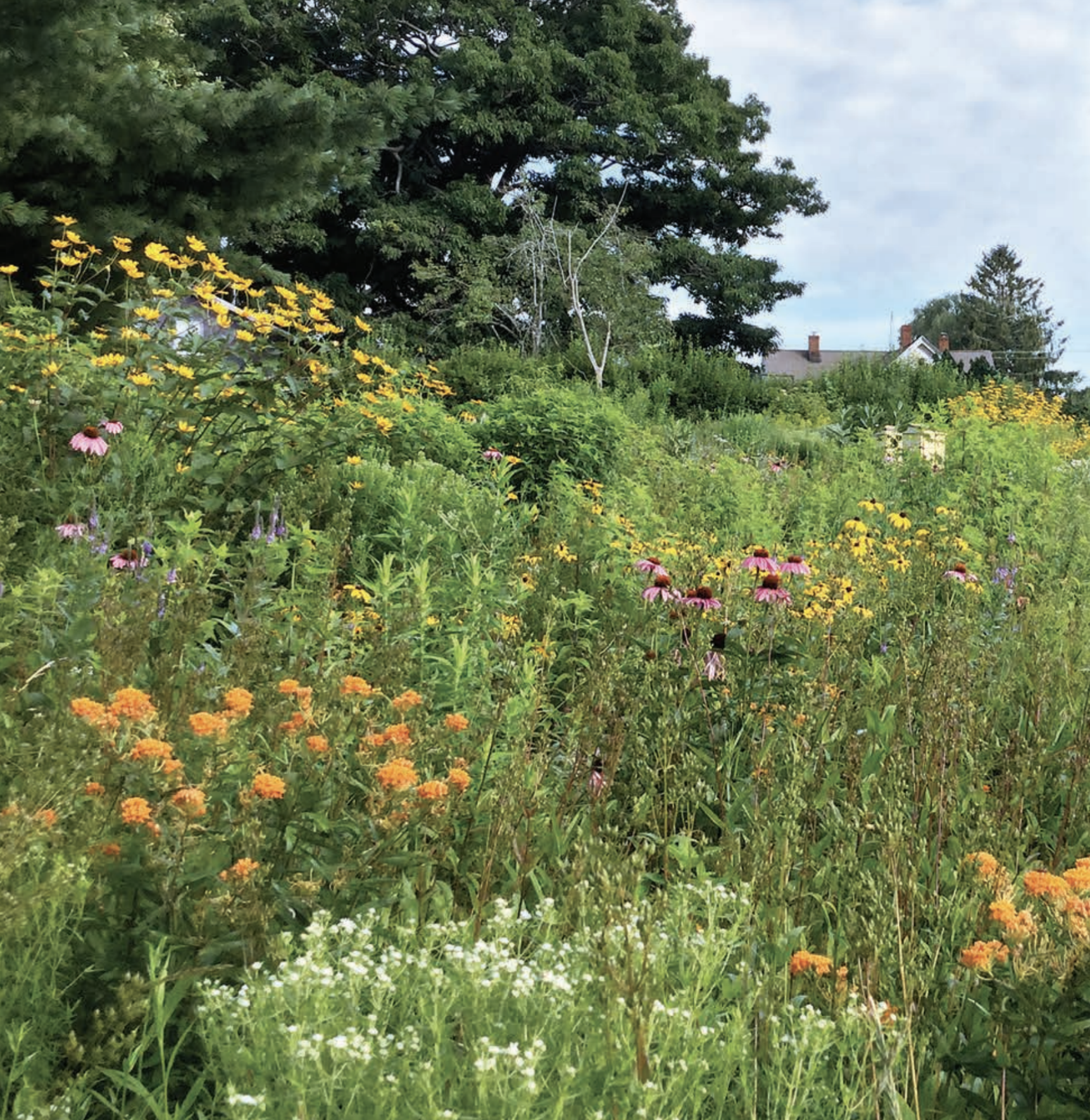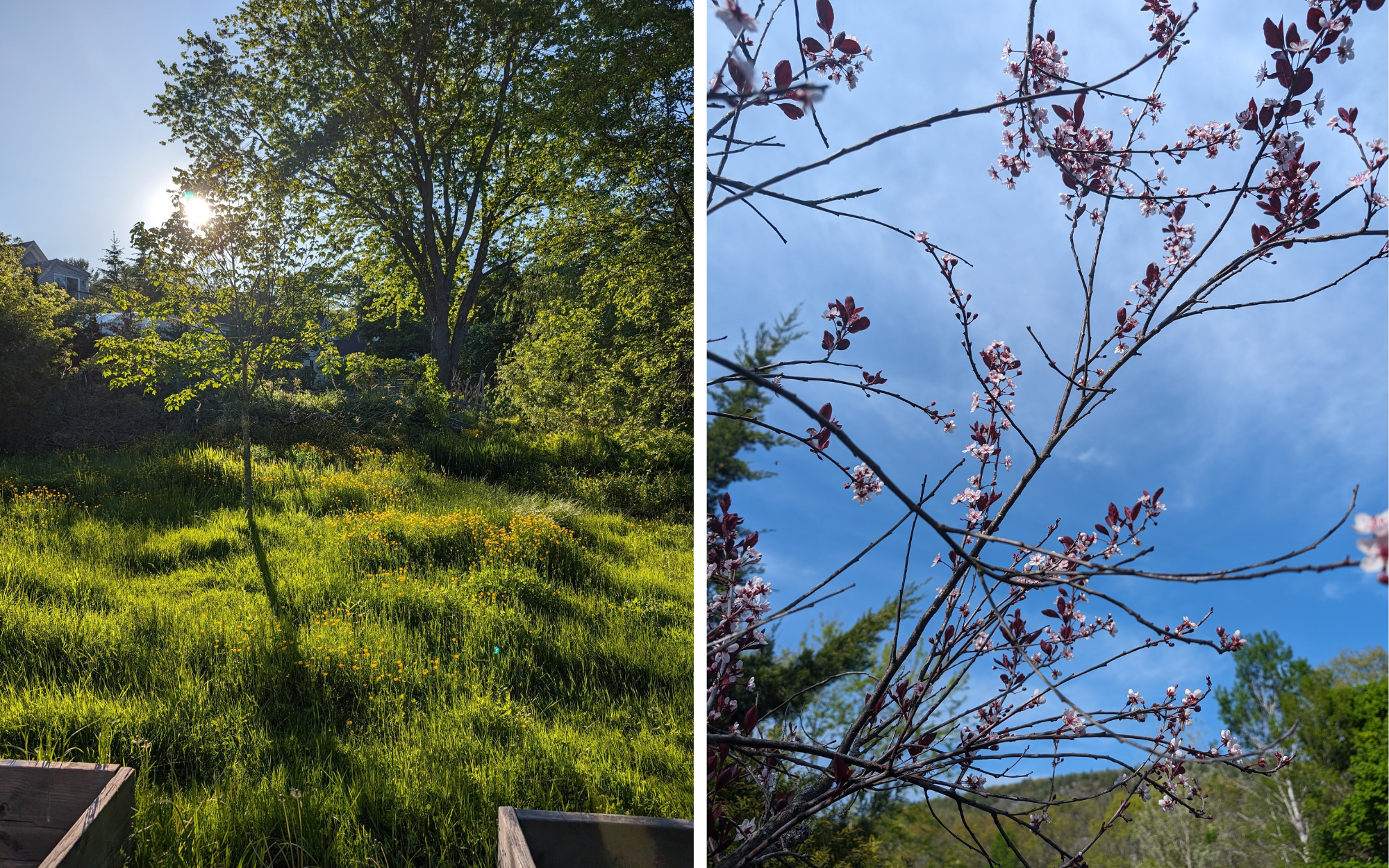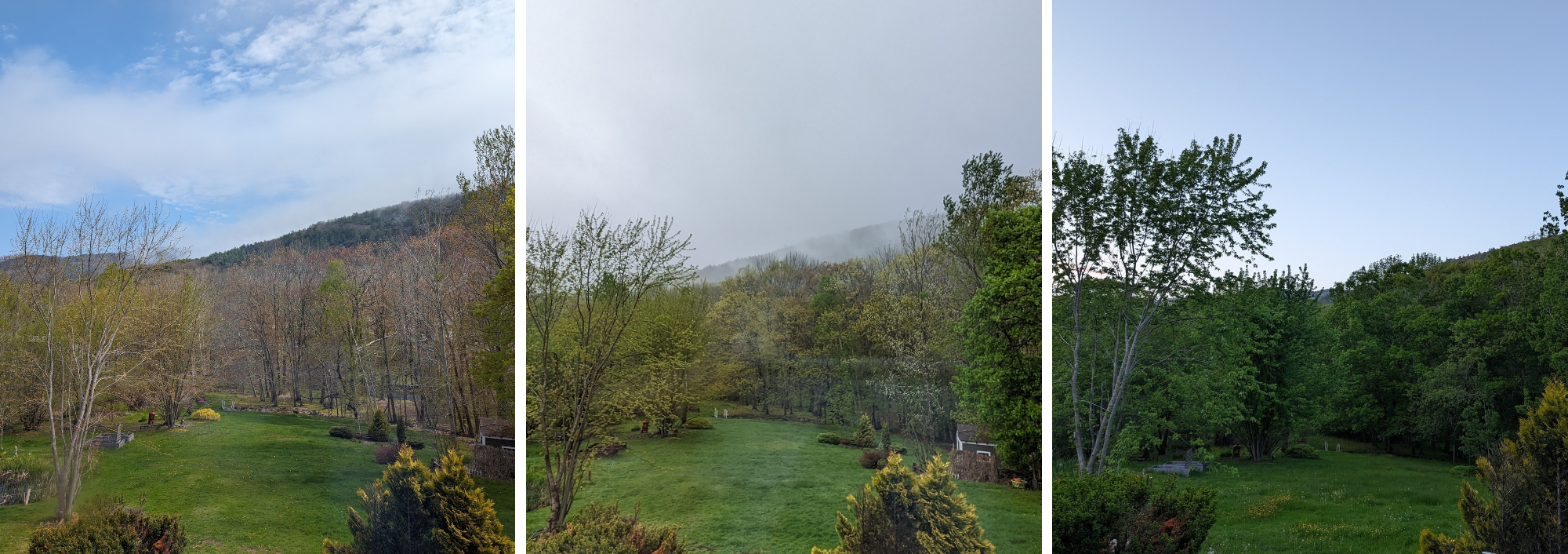I’ve been experiencing the turning of the seasons in a new way this spring. Our new (old) home sits on about an acre of land on the Megunticook River in Camden, and we bought it in late fall, so the landscape has been mostly dormant during our time here so far.
In the past six weeks or so, it’s come alive.
I have delighted every day in discovering new plants that I didn’t know would grow in this yard — a pale yellow rhododendron, a patch of phlox, a maple sapling, a delicate cherry plum. Just this week I came upon a deep fuschia lilac tree blooming by the back shed. (I’ve shared it here before, but I’ve been thinking a lot about my favorite spring poem.)
This plot of land also contains a lot of lawn, courtesy of the previous owners. My husband and I have been eagerly participating in No-Mow May, letting the buttercups and dandelions proliferate and being sure to check for ticks often. Our long-term hope, though, is to restore much of this property into a more natural meadow, with space to walk, play and grow food.
One way to achieve the most resilient and pollinator-friendly version of this transformation, experts say, is to cultivate native plant species.
“When we talk about non-native plants, and plants that oftentimes have European or Asian origins, it’s not that they’re evil plants,” said Tyler Refsland of the Wild Seed Project, a Maine-based nonprofit. “A lot of them are highly successful, like dandelions… they’re edible, they have a lot of uses and even some pollinators use them.”
But typically, he said, those pollinators are generalists — bumblebees, flies, European honeybees. These introduced species don’t do as much for the native fauna that have developed specialized relationships to native flora over millennia.
“The whole connected food web, the whole ecology of place, co-evolved,” Refsland said, “and therefore has dependent relationships on one another.”
It means these species have learned to co-exist in a way where one doesn’t dominate the others, evolving to provide food to particular creatures and to be pollinated in return, like the classic example of milkweed and monarchs. Often, these groupings of plants are survivors — hardy, diverse and adapted to Maine’s seasonal variability.
These strengths are more important than ever in a changing climate. Temperatures are warming, the winter season is shrinking and rainfall is becoming more frequent and intense in Maine — but this shift is also bringing greater extremes in all directions. Human growth and certain responses to these changes are also adding new stressors to the environment.

The Wild Seed Project puts out periodic guides to native plantings in the Northeast, and their latest edition, out this month, is called Planting for Climate Resilience. It features six plant communities and 42 native species, diverse in light, water and soil needs and growth heights, all adapted to help control or survive some combination of flooding, drought, salt exposure, soil compaction or erosion.
Refsland said previous guides have discussed planting for warming temperatures, by suggesting more southerly native species that could help replace declining cold-hardy plants in Northern Maine. For this guide, they wanted to branch out, considering variability and climate impacts in broader terms.
“We’re increasingly in just a human-dominated world. Climate change is one symptom of that, one very, very important symptom, but we affect our environment in a myriad of ways,” he said.
Is your community using more salt on its roads to deal with more frequent sleet and icy rain in the winter? Sea salt-adapted plants like blue vervain, milkweed, meadowsweet and goldenrod can tolerate it. Need relief from increasing extreme heat in a heavily paved environment? Canopies of trees like scrub oak and sycamore provide a cooling effect for people and create understory habitat for shade-loving species.
Certain plants can help soak up heavy rains to ease the burden on stormwater systems. Others have deep roots to prevent soil erosion in increasing storms.
“If you can collaborate with these plants that already bring all these skills, and appreciate these skills, then we’re all a little bit more resilient,” said Wild Seed Project communications coordinator Caitlin Marshall.

The plant identification app I’ve been using in my yard is set to assume species are from the Northeast. But often, I’ll snap a picture of a plant and it will send me to a “world flora” section instead. Many of the beautiful, familiar ornamentals, shrubs and even trees in my yard are introduced or non-native.
Refsland said it’s important at the start of a native plant transformation to take multiple seasons to “read your landscape,” learning about its existing seed bank — its hidden gems, and what problematic plants you might need to “combat” for years to come.
“Understand, okay, well, I have this aggressive non-native plant, so I maybe should get something like a rudbeckia or a black-eyed coneflower (also known as black-eyed susan) that can compete really well with other aggressive plants,” he said, “to make sure that you’re making your life easier rather than harder, trying to make that transition bio-diversifying your landscape.”
This process is about patience and relationships, Marshall said. Take the time to get to know your site, its light, drainage, soil, and approach it with reciprocity — not just asking what you can get from the land, but what you can do to share in its flourishing. This can go for an urban balcony, a suburban lawn or a farm.
Ann Pollard-Ranco, a Penobscot Nation citizen who lives in Brooksville, writes in an introduction to the new Wild Seed Project guide, “What are the ways that you can make a positive impact through creation of habitat spaces for all our relations?”
I’ll be taking this question with me into the rewilding of the land I’m now stewarding in Camden. We’ll be working with Midcoast Permaculture to plan this place’s transformation into a healthy, resilient ecosystem.







